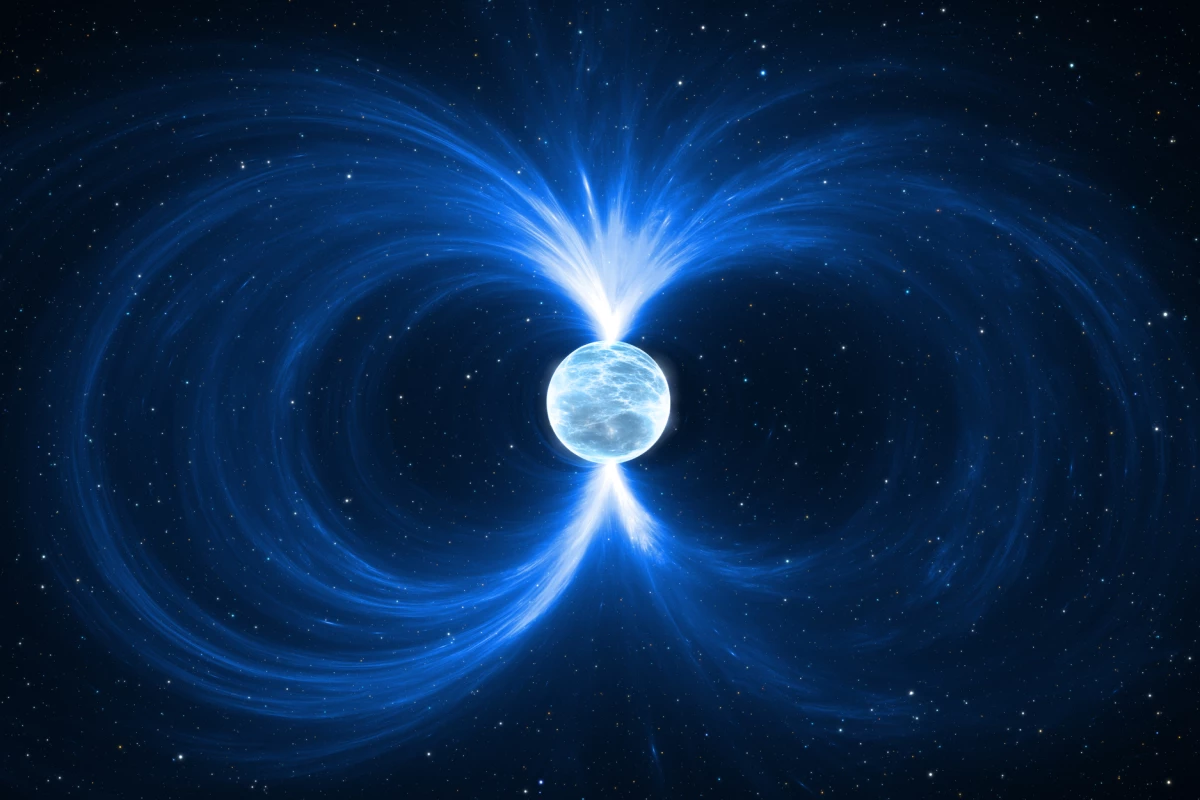Stars are big hot balls of plasma, but astronomers have now spotted a super strange one that seems to have a solid surface. Its intense magnetic field is strong enough to overcome its blistering temperatures and “freeze” its outer layers into a solid crust.
The discovery was made by astronomers studying data from the Imaging X-ray Polarimetry Explorer (IXPE), a satellite that measures the polarization of X-ray light from cosmic sources. Polarization is essentially the direction that electromagnetic waves are “pointing,” and analyzing them can reveal much about an object and the environment around it.
In this case, the team examined IXPE’s data on a magnetar known as 4U 0142+61, located about 13,000 light-years away from Earth in the Cassiopeia constellation. Magnetars are a type of neutron star with an extremely powerful magnetic field, and this marks the first time such an object has been observed in polarized X-ray light.
The data revealed some surprises about the magnetar. Firstly, it was expected it would have an atmosphere surrounding it, and this would produce a signal where the light was polarized in one specific direction. However, this wasn’t the case, indicating a lack of an atmosphere.
Weirder still, at higher energies the angle of polarization was flipped exactly 90 degrees, compared to light at lower energies. This is the signal that would be expected if the magnetar had a solid surface, surrounded by a magnetic field on the outside. This crust would be made up of a lattice of ions, with the magnetic field holding it all together.
“This was completely unexpected,” said Professor Silvia Zane, co-lead author of the study. “I was convinced there would be an atmosphere. The star’s gas has reached a tipping point and become solid in a similar way that water might turn to ice. This is a result of the star’s incredibly strong magnetic field. But, like with water, temperature is also a factor – a hotter gas will require a stronger magnetic field to become solid.”
The team acknowledges that there may be other explanations for the observations, but this is the first time a solid surface on a star has been a viable hypothesis. The researchers plan to examine even hotter magnetars in future, to investigate just how temperature and magnetic field strength might interact to change a star’s surface.
The research was published in the journal Science.
Source: University College London




